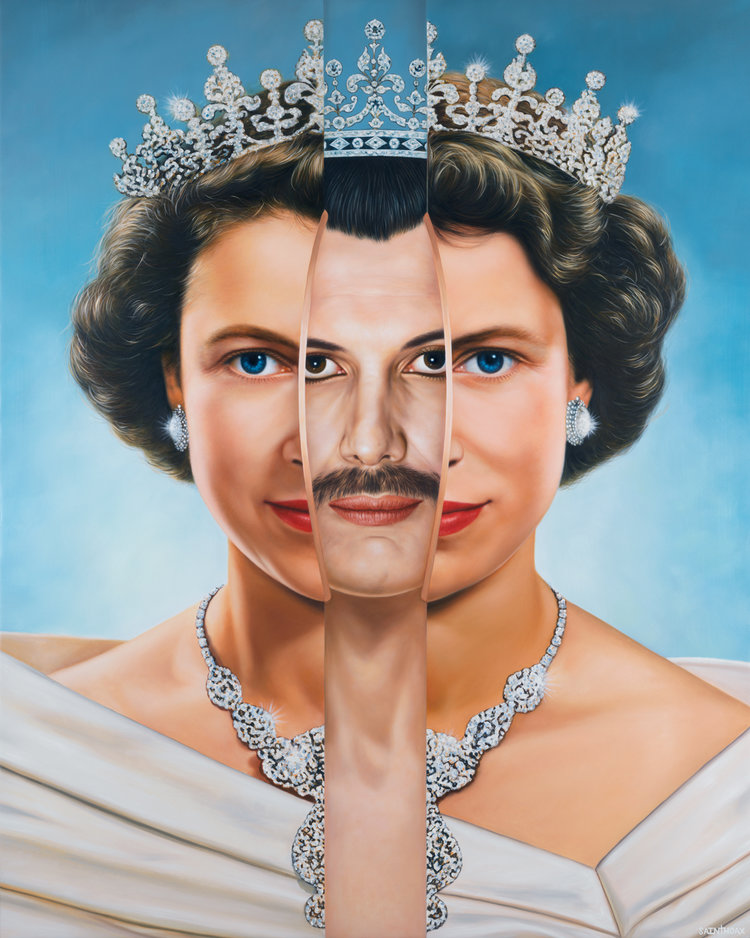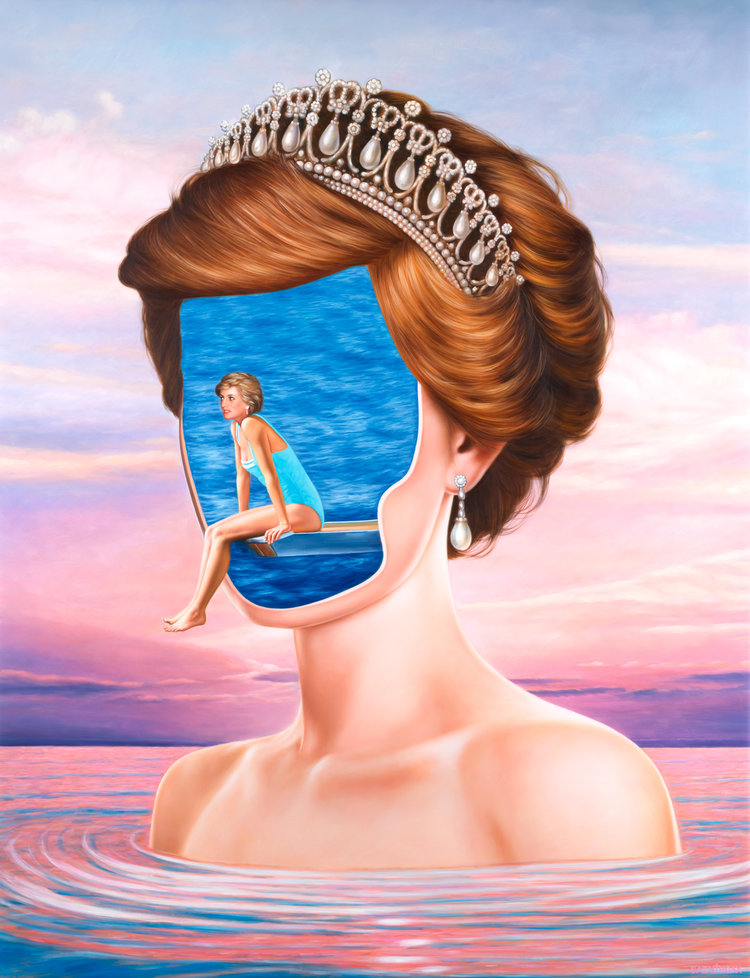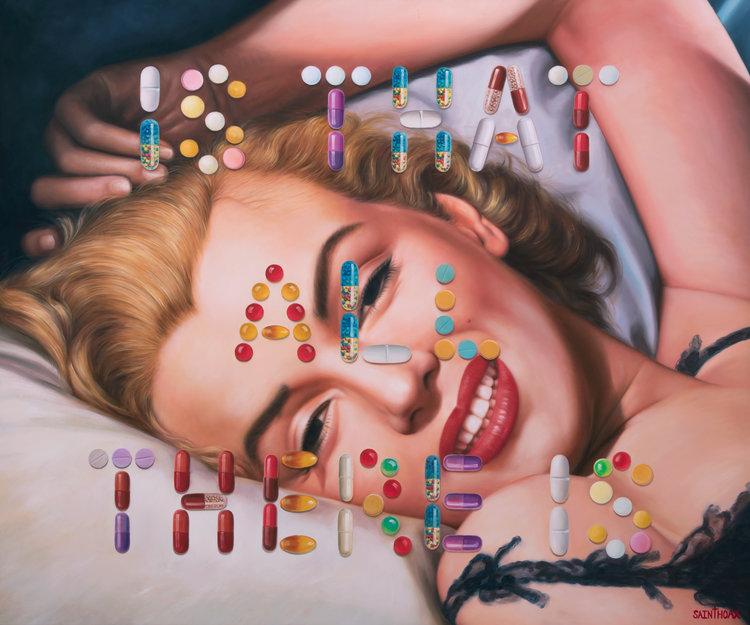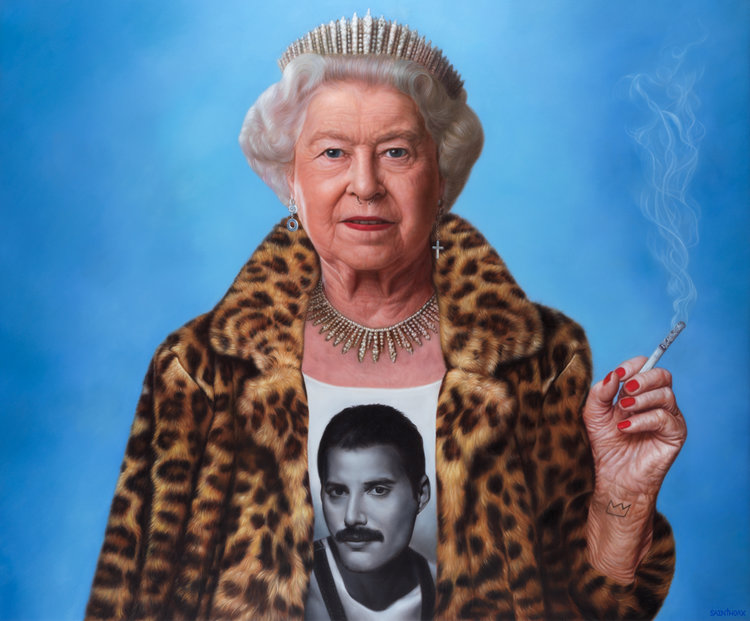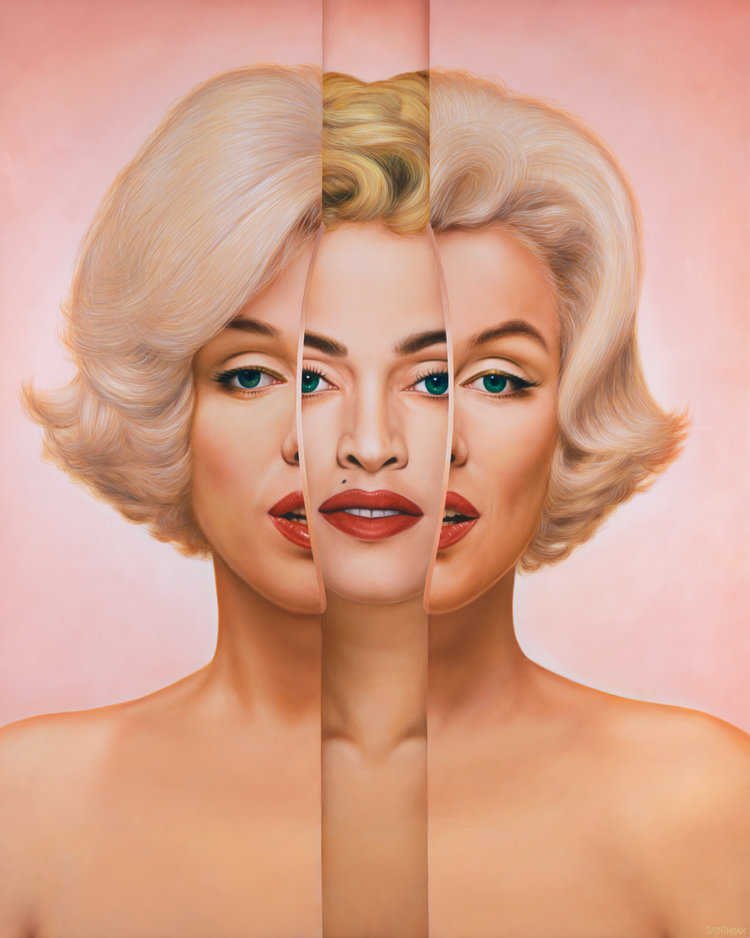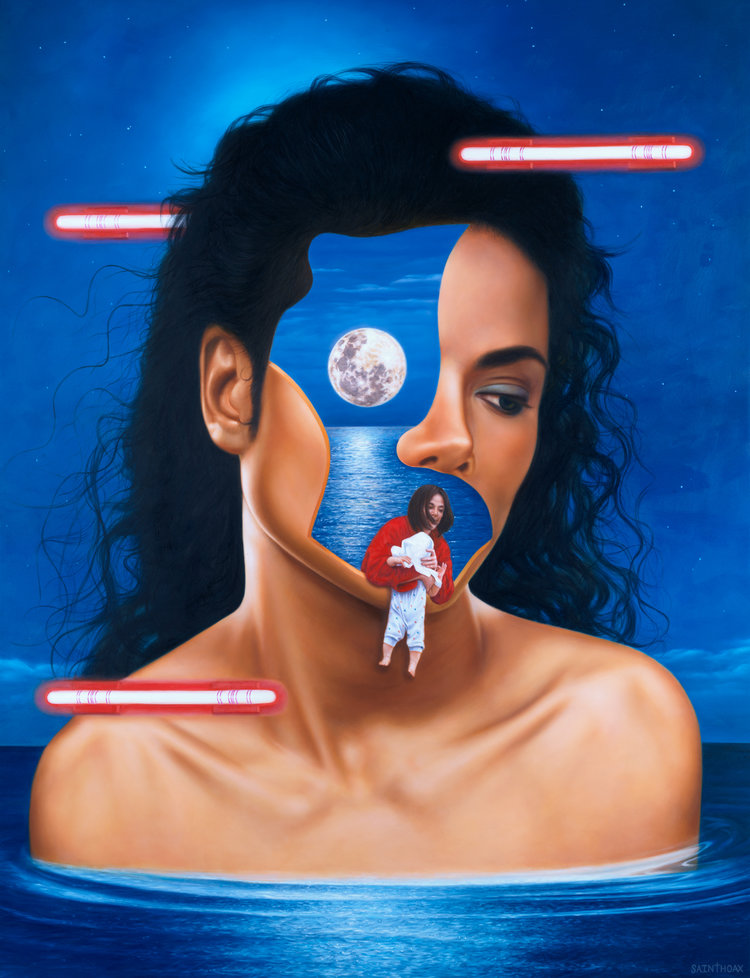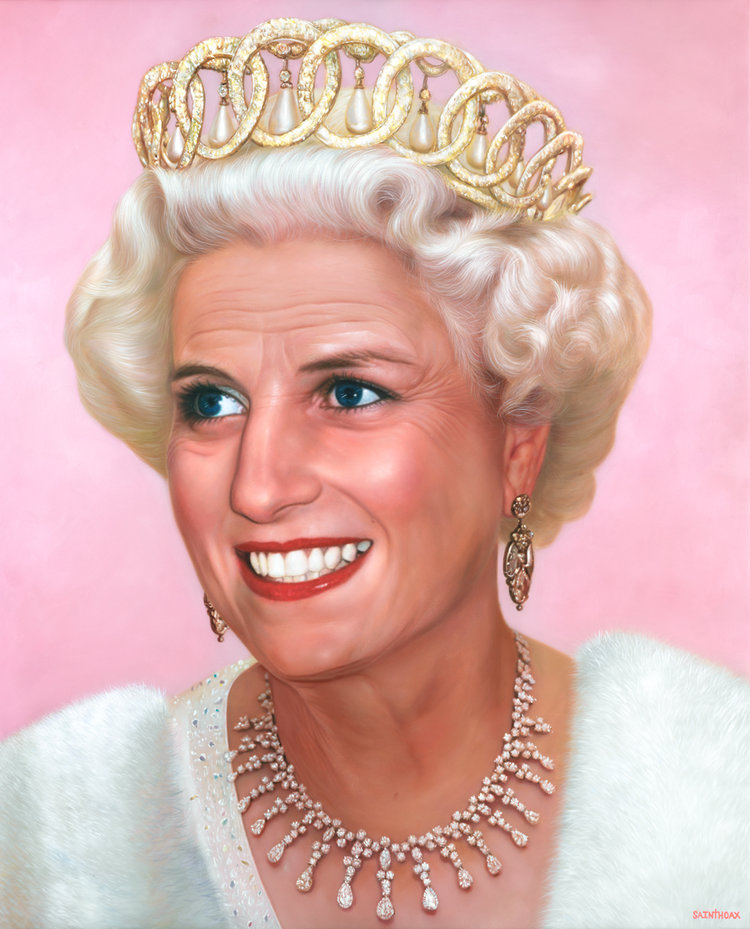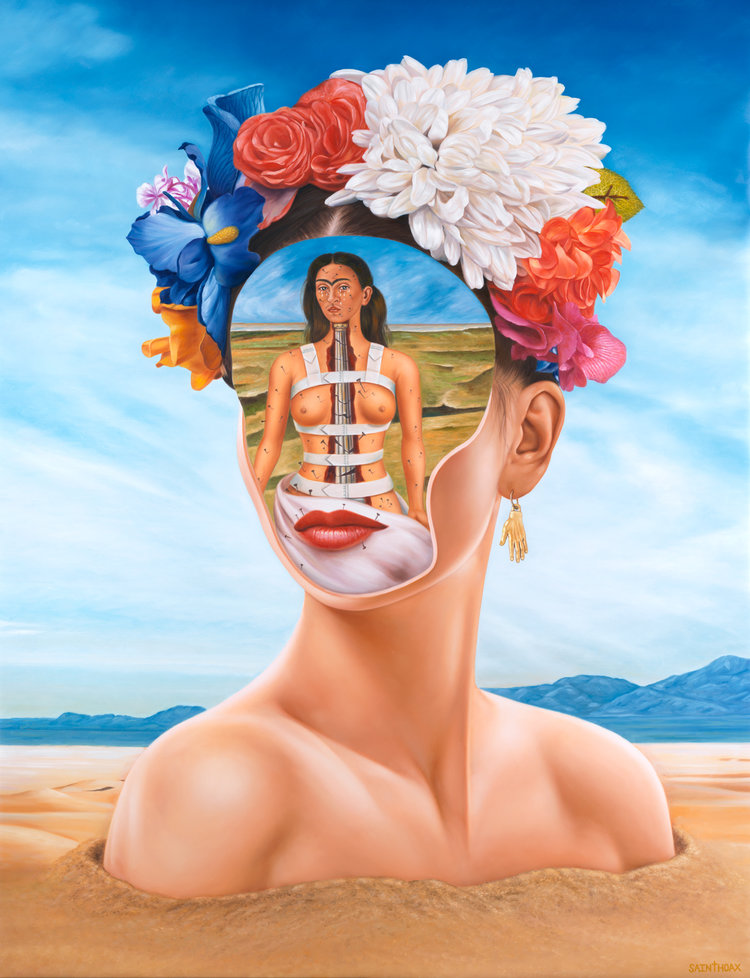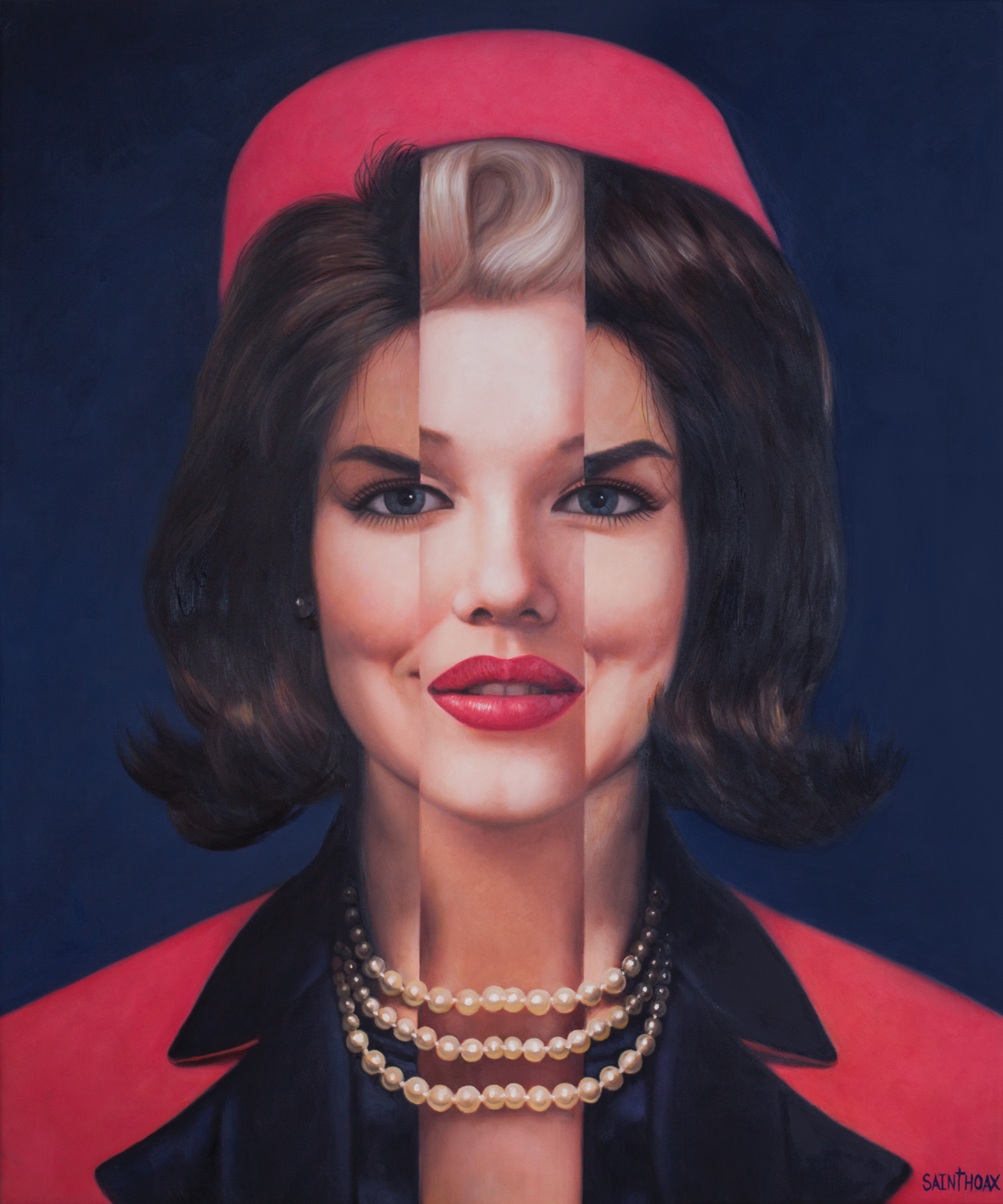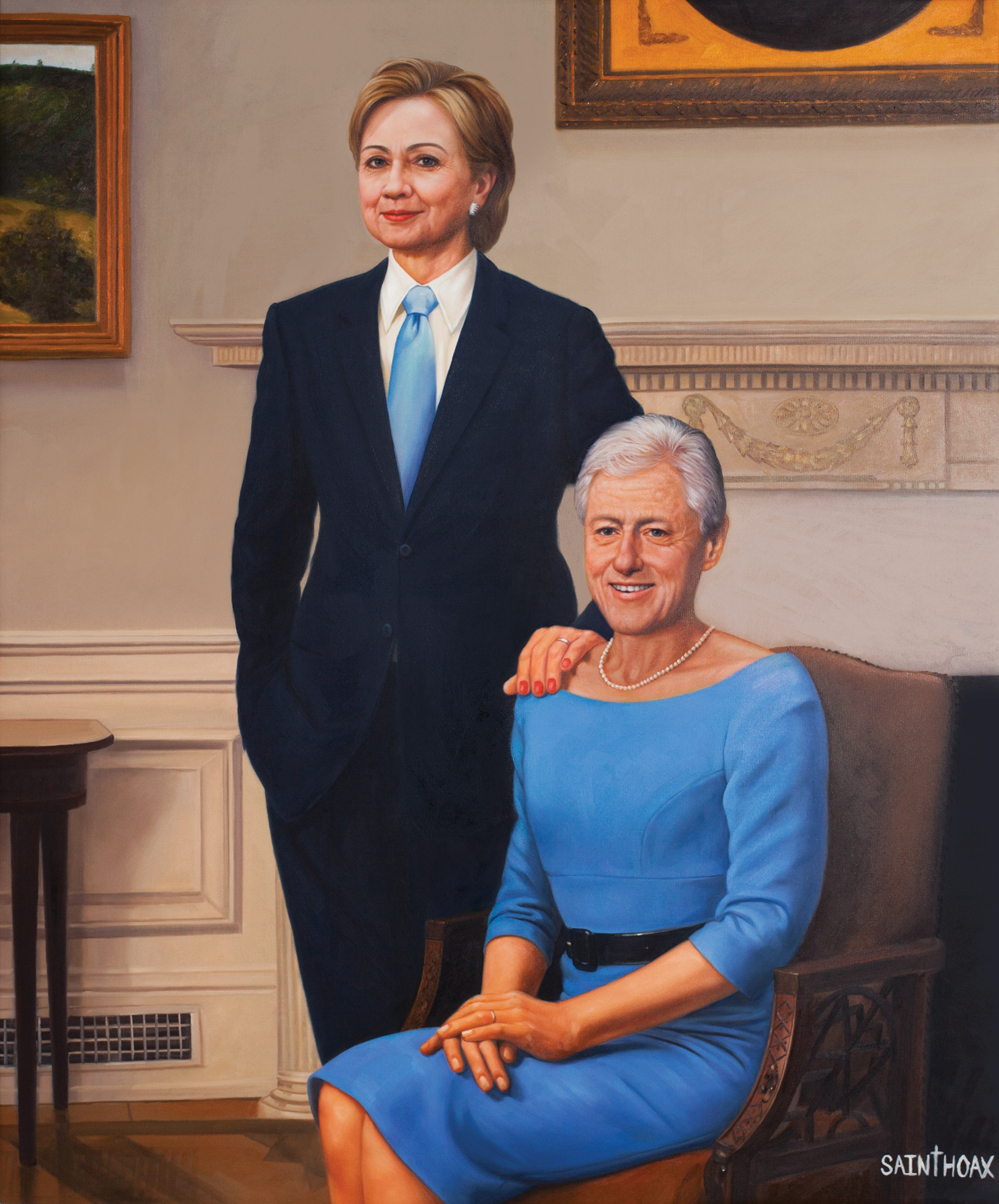SAINT HOAX: MONUMENTAL
MONUMENTAL
Saint Hoax is undeniably one of the most elusive contemporary artists to have burst onto the art scene. Undefined by age or gender, the work stands for itself, one thought-inducing statement at a time. Yet it is the artist’s unusual career path that has proven to be the bigger statement, rising to fame as both a digital provocateur with the uncanny ability to consistently go viral with each passing post and a masterful painter whose work has been exhibited in galleries around the world. Saint Hoax, the black sheep in an otherwise puritanical art world, is nothing less than a trailblazer for the next generation of artists to come.
“There’s nothing more reassuring than the demystification of legends - a confirmation that greatness is attainable yet transient.”
Tell us about the idea behind the title of your show?
“MonuMental” is a play-on-a-word underlining the challenged mindsets of individuals faced with insurmountable fame. Such fame can create conflict between one’s self-perception and the public’s perception. I found the title fitting as the show is essentially an iconographic study of magnified personas versus the vulnerability of the souls behind them.
Why did you choose Beirut as the hosting city for MonuMental?
Beirut’s multi-cultural and diverse art scene is effervescent, despite its sociopolitical hardships. The resulting tension is very inspiring to me as an artist.
The venue seems to have a “MonuMental” story of its own. Both an architectural staple of Beirut’s golden years, and a tragic reminder of its Civil War. What was it like building an art show from scratch in a devastated locale?
“The Egg” is one of Beirut’s most resilient and aesthetically striking architectural icons. Constructed in the 1960s as a cinema, and destroyed during Lebanon’s civil war, its erection, demolition and conservation has been at the center of many heated debates in post-war Lebanon. This is the first time the building is open to the public in over a decade. Knowing that my work will be exhibited in such a venue was exhilarating, but also nerve-wracking. We had to build everything from scratch, while taking into account how delicate the infrastructure was while finding the ideal balance between making use of the iconic space and highlighting the work itself.
Your portrayal of contemporary icons and their subsequent mental breakdowns reminds me a lot of Dali’s “Metamorphosis of Narcissus”: mesmerizing and surreal at first glance and yet terribly upsetting when given a closer look. Was this intentional?
There’s definitely some surrealist influence in my work. I’m attracted to art that is not only masterfully crafted, but also stunningly tragic, similar to Dali’s “Narcissus”. There’s something thrilling about finding something aesthetically pleasing and suddenly being taken aback by the darkness in the detail.
Why is the work displayed in MonuMental is of such epic proportions?
The larger-than-life proportions are meant to instantly mesmerize the audience with big faces filling entire canvases using saturated colors. Upon closer inspection, a hidden truth is exposed, like a wicked plot twist on canvas.
A big part of your artistic signature is visual puns. In MonuMental, you juxtapose celebrities like Madonna and Marilyn Monroe in “Blond Ambition”, or Freddy Mercury and Queen Elizabeth in “Killer Queen”. Why?
Many contemporary icons have, at some point in their career, usurped previous icons’ identities as a form of positioning, or a shortcut to tailoring their own public persona. I decided to portray such occurrences by having the original icons worn by their contemporaries, or vice-versa. That being said, that specific series is essentially designed to be visual quips, and over-analyzing it can take away from its initial visual impact.
“The larger-than-life proportions are meant to instantly mesmerize the audience with big faces filling entire canvases using saturated colors. Upon closer inspection, a hidden truth is exposed, like a wicked plot twist on canvas. ”
When you think of Lady Diana, Michael Jackson, and countless other idols showcased in your show who have succumbed to the pressures of fame, you can’t help but compare them to Greek tragedies. Why are we so obsessed with fallen heroes?
While we are fascinated by perfection, there’s something reassuring in the confirmation that nothing is truly immaculate. Being flawed, and making mistakes is inherent to the human condition, which is what we all identify with. Watching our idols breakdown makes them more relatable, and makes our own imperfections more bearable. There’s nothing more reassuring than the demystification of legends - a confirmation that greatness is attainable yet transient.
If you could resurrect one of these fallen icons, who would it be?
The people’s queen: Diana. She was someone who cared so much, and worked against an entire system to promote human values and kindness. She did great work for HIV awareness when it was still a huge taboo, children, patients … everyone. She was a great philanthropist, and I would’ve loved to see her continue her legacy.
We’ve witnessed quite a few celebrity breakdowns recently including Cardi B, Demi Lovato and to an extent Kanye West, yet these breakdowns don’t seem to have a lasting impact on the public. Why do you think that is?
Celebrities are no longer as enigmatic as they used to be, partly due to over-exposure. We have instant access to them through their extensive social media coverage, which allows us to not only understand them better, but also see them for who they really are as opposed to who we want them to be. The social media phenomenon makes it very challenging to create an enigma around a public persona, which almost renders their downfall a little more predictable.
As obsessed as we are with celebrity meltdowns, we’re also big fans of a good comeback. Are you?
I don’t believe in the concept of “comebacks”. Just because an artist takes a step back from the spotlight doesn’t mean that they left in the first place. It’s normal for artists to seclude themselves in order to regroup, grow and evolve. A “comeback” comes with expectations, and expectations invariably lead to disappointment. There’s so much pressure on the artist to please and on the audience to appreciate, that most of the time, the work gets compromised by its hype.
“Once you’re famous you will always be remembered by the public as a headline, whether good or bad, and that is an immense amount of pressure to put on someone.”
Nowadays, with social media, anybody can become famous at any time, for any reason. Are you nostalgic for good ol’ fame or excited to see where this is going?
I miss the privacy that came with fame before, and the enigma that ensued. On the other hand, I like the idea of democratizing fame. If you have enough talent and know how to market yourself, with a bit of luck you can make it and that is a great thing for aspiring artists around the world. Fame comes with equal opportunities now, which promises a major and long-overdue shift in power dynamics within the media industry.
As a pseudonymous artist, whose work has been shared and liked by icons including Madonna and Kim Kardashian, what is your personal relationship with fame?
The idea of fame and adulation intrigues me as a subject more so than as a lifestyle. Although I am constantly lured towards it, the notion of being famous also riddles me with anxiety. Once you’re famous you will always be remembered by the public as a headline, whether good or bad, and that is an immense amount of pressure to put on someone.
Your career path as an artist has been rather unconventional. You’ve had various solo shows around the world, and you also thrive in more low-key digital art without fully transitioning into either. How come?
I think of the work I share on Instagram as today’s iteration of the editorial cartoons we used to read in newspapers that critiqued or satirized trending topics. Digital platforms allow for work to be produced and showcased faster, which feeds my spontaneous side and allows me to tackle relevant topics at a moment of peak interest. My paintings, however, are meant to be timeless and cater to my contemplative artistic side, as paintings are inherently consumed in a more thoughtful and deliberate manner. I would never want to compromise either facets of my work by having to choose one over the other.
The “art world” is becoming more and more archaic. In your opinion, what is the key to getting our generation interested in art galleries again?
Technology and more immersive experiences. I think it’s more engaging when the viewer has a less passive role when it comes to experiencing art.
What’s next for Saint Hoax?
I’m ready to step out of the canvas and into the 3D world. I’d love to experiment with VR in the near future.
Interviewed by Ralph Arida


